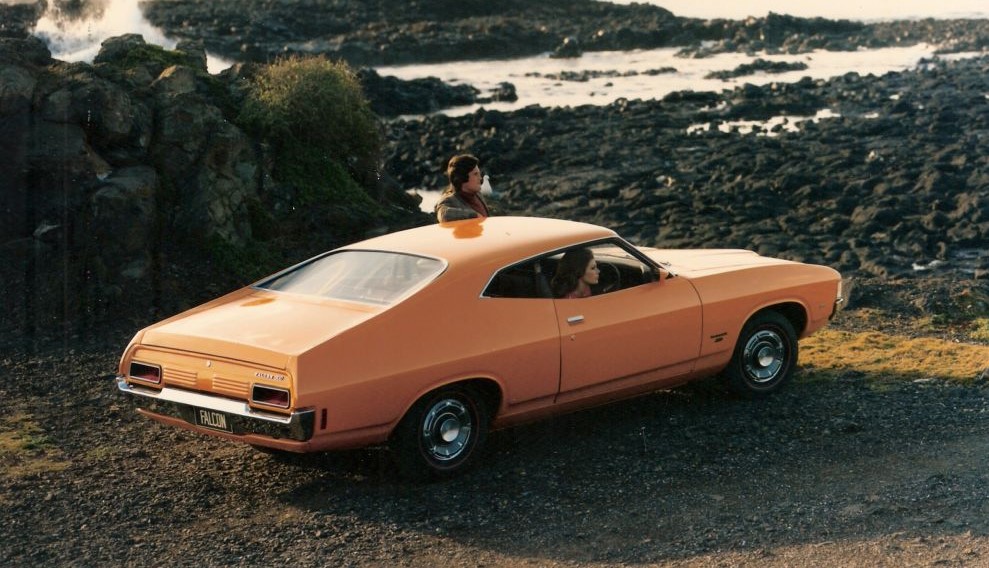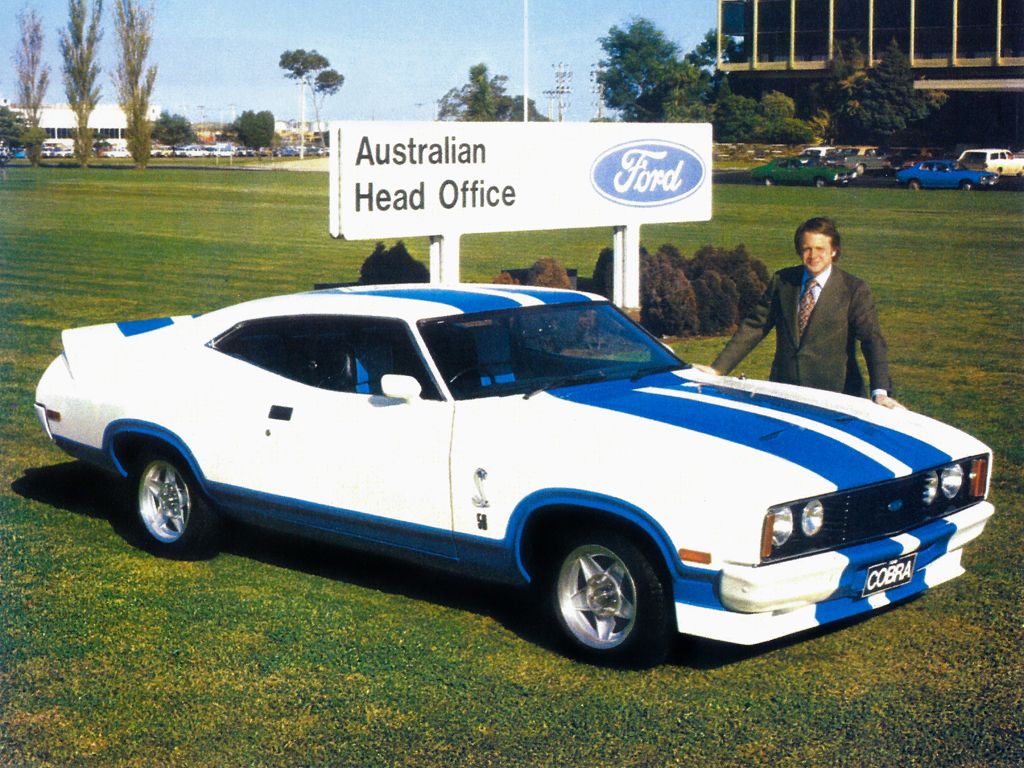Retro Stories by David Burrell
Australian automotive folklore says that the shape of the 1972 XA Falcon coupe, with its bulging rear fenders, was first drawn by Ford Australia’s design manager, the late Brian Rossi, in late 1968, on a napkin while he was having dinner at a Melbourne restaurant with his boss, design director, Jack Telnack.
Well, some of that is true.

In a series of chats during 2018, Brian explained to me what really happened.
“Jack and I were on a trip to Ford headquarters in Dearborn to update them on the progress of the XA sedan and ZF Fairlane. We had stopped off in Honolulu over the weekend and were staying at the Outrigger Hotel on Waikiki Beach. On the Saturday night Jack and I were having a drink in the hotel bar and we were talking about the coupe and I got my pen out and sketched a rear three quarter view on a napkin. And that’s what happened. That’s how it was designed. Lucky I also kept the napkin!”

In the same way that Holden’s designers were able to convert the humble HK and HQ Holden sedans into svelte Monaros, and Brian Smyth at Chrysler reshaped the VH Valiant into the Charger, Jack, Brian and their team were able to transform the XA Falcon four door into a tough and sleek-looking coupe.

Ford’s XA Falcon coupe was released in August 1972, six months after the XA sedan and wagon. It was Ford’s first mainstream coupe offering since the XM/XP Falcon hardtop coupe had appeared eight years earlier.

Ford Australia was motivated to develop the XA coupe by the arrival of the HK Monaro. It appeared at the same time as the preliminary development work was being done on the XA sedan. According to Brian, its impact was not lost on Ford Australia’s managing director Bill Bourke. So, a coupe became part of the XA product plan.

Brian led the styling of the coupe. He recalled that:
“We did a two-sided version of the clay model with different styling on each side, mainly the side window shape and belt line. Then we reviewed them and decided which one would be the main theme to go forward with, which we then refined.”

With the main styling theme agreed, the team created another clay model, this one was also two sided. It is at this point that the story of the car’s bulging rear fenders starts to emerge.
It is generally believed that Ford’s racing boss, Al Turner, insisted on the wide rear fenders so the GT version could race at Bathurst using the widest wheels and tyres. Brian recalled it somewhat differently.
“We always had the impression that the coupe would only be a GT model, and have wider wheels than the sedan. We did not expect it to be a full range car. So, when we did the two-sided model, we did a rear fender design on one side, which would easily accommodate wider wheels and tyres for the GT. But on the other side, we got a bit carried away, and did an exaggerated and even wider rear fender.”

Meantime, the product planners decided that the hardtop would be a full range offering, Brian revealed what happened next.
“We thought we could have two rear fender treatments for the production car. The really wide ones would be just for the GT, and the other narrower ones for everything else. But, cost considerations meant we could only have one.”
It was Ford’s managing director, Bill Bourke, who made the decision to go with the ultra-wide fenders for all coupe models.
A key design feature of the coupe was its large concave rear window. It was part of Brian’s original napkin sketch. It created significant manufacturing, complexity, cost and engineering difficulties. But Jack Telnack wanted it and he won the argument.

Sales of the XA (and XB/XC) coupe were always problematic. By the early 1970s the appetite for large two door cars was diminishing. Holden’s 1976 LX Torana hatchback pointed to a more practical and smaller alternative, as did the imported Toyota Celica, Datsun 240K and Mazda 929 hardtop coupes.

The Falcon coupe was discontinued in 1978, the final example being the Cobra. It was the last of the big coupes from the “big three”. Time had been called on the Charger and Monaro during the previous two years.
The XA coupe is yet another reminder of a time when we had a dynamic Australian car industry. It was a time when talented people designed and built stylish cars on minimal budgets. It was a time when we thought we could do it all.
And most times we did.


